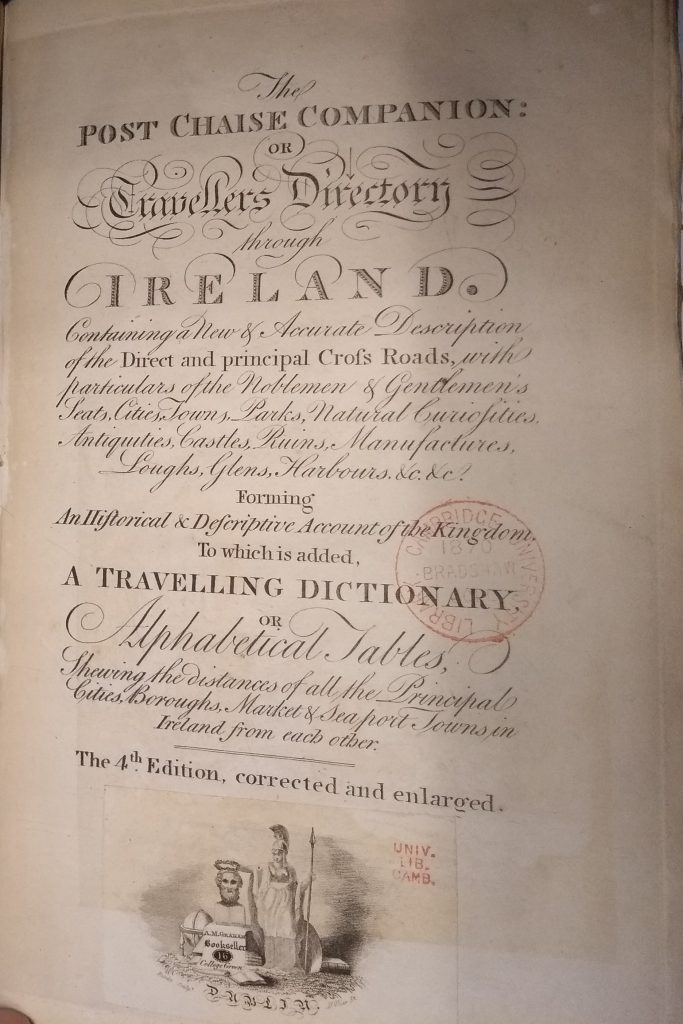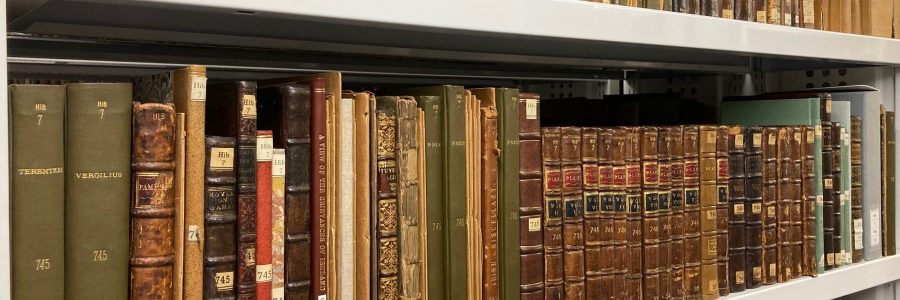
Henry Bradshaw: an Irish book collector?
This post is by Dr Nora Moroney, Munby Fellow for 2022-23. Nora is working on the book collection of Henry Bradshaw (University Librarian 1867-86) at Cambridge University Library, tying together the practices of private book collecting and institutional acquisition.
Henry Bradshaw was perhaps the ultimate Cambridge man. Born in London, he followed the well-trodden path from Eton to King’s College in 1849 and for the rest of his life rarely left the hallowed surroundings of the University. His rooms were in King’s, and he worked for over three decades just down the road in the old University Library. He was that most Victorian of scholars, a prodigious intellectual and polymath who spent most of his days immersed in the manuscript and incunabula collections.
So it may be surprising that he was also one of the nineteenth century’s most important collector of Irish books. The Bradshaw collection – now at the CUL – stands testament to his passion for rare editions of Irish print. He amassed over 5,000 books during his (relatively short) life, from early grammars in Irish to nineteenth-century political pamphlets. Like most book collectors, he found it almost impossible to stop buying books, once remarking that ‘for the last two years I have been paying and paying, and have never had anything in my purse’ (this was in 1862, just before he sold part of his library).
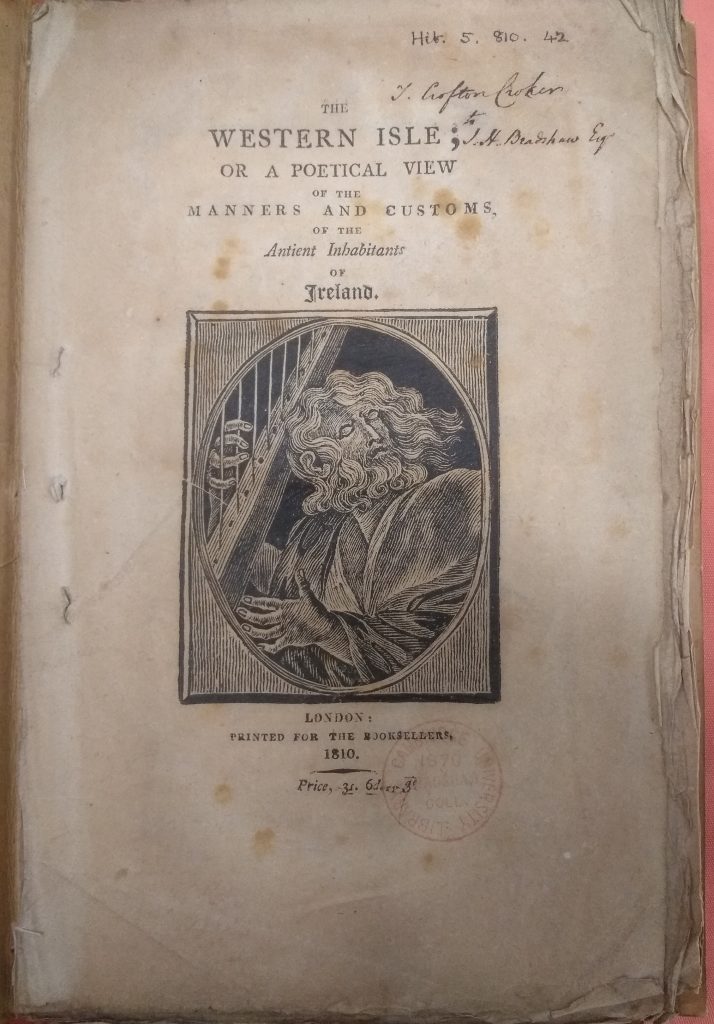
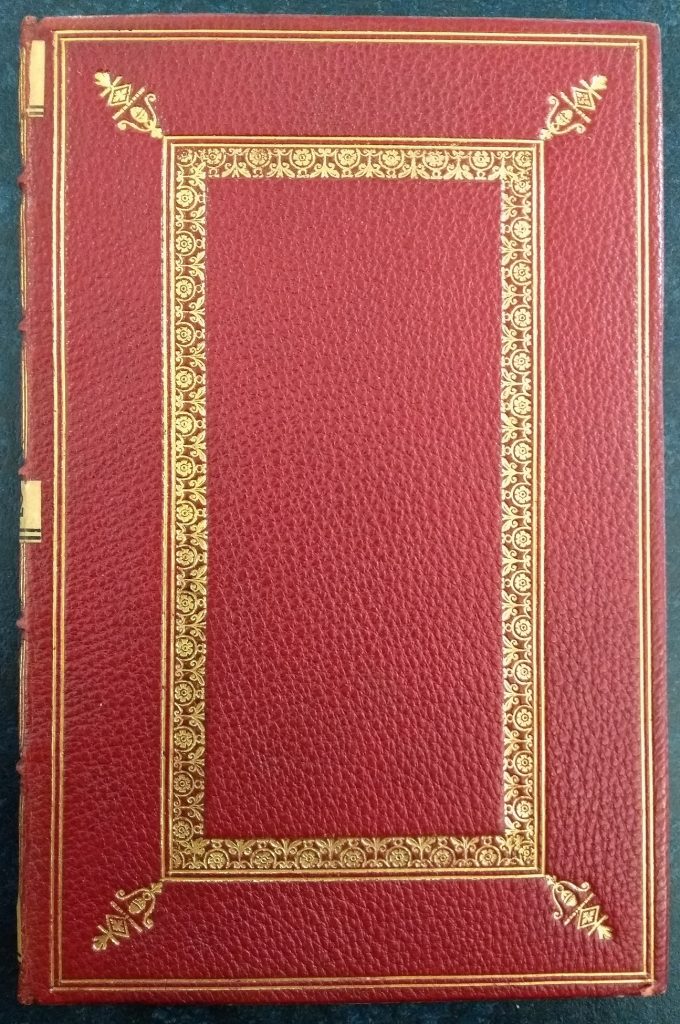
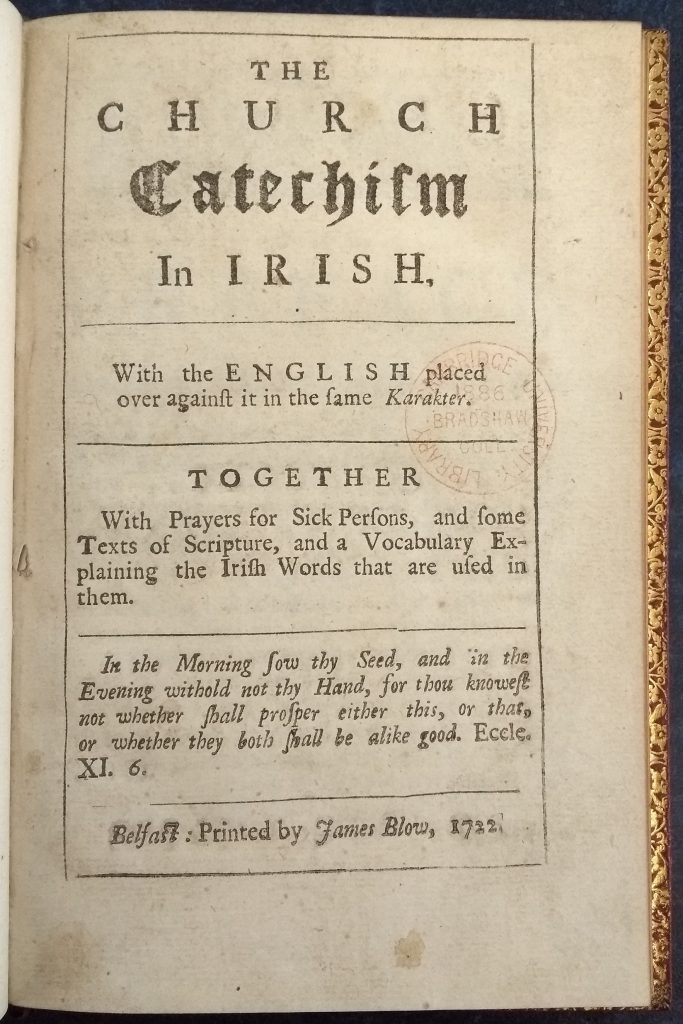
But how did he come to be such an enthusiast for Irish books? The key to understanding this lies in Bradshaw’s family background. His father, Joseph Hoare Bradshaw, came from a Quaker family in Co Antrim, while his mother was born in Co Down. His father owned an impressive library and had connections with the Irish literary community both in Ireland and England (see image above left). Henry Bradshaw inherited much of this library and clearly treasured the links it provided to his ancestral homeland. He had a particular interest in printing from Ulster, as illustrated by a 1723 Belfast Catechism (images above centre & right) which he declared one of his favourite items.
For many people, some of the most interesting, and visually appealing, material in the collection is the Irish language material. Bradshaw assiduously collected early editions of Irish language from the beginning of the seventeenth century, and these religious books are highly important markers in the development of print on the island. One of the most prized works was a 1608 first edition of Leabhar na nUrnaightheadh gcomhchoidchiond (or The Book of Common Prayer, see below left). Along with the 1602 New Testament in Irish, or Tiomhna Nuadh, this is the work of Uilliam Ó Domhnuill, using Queen Elizabeth’s Irish type. Its title page is also the first known use of red ink in Dublin printing.
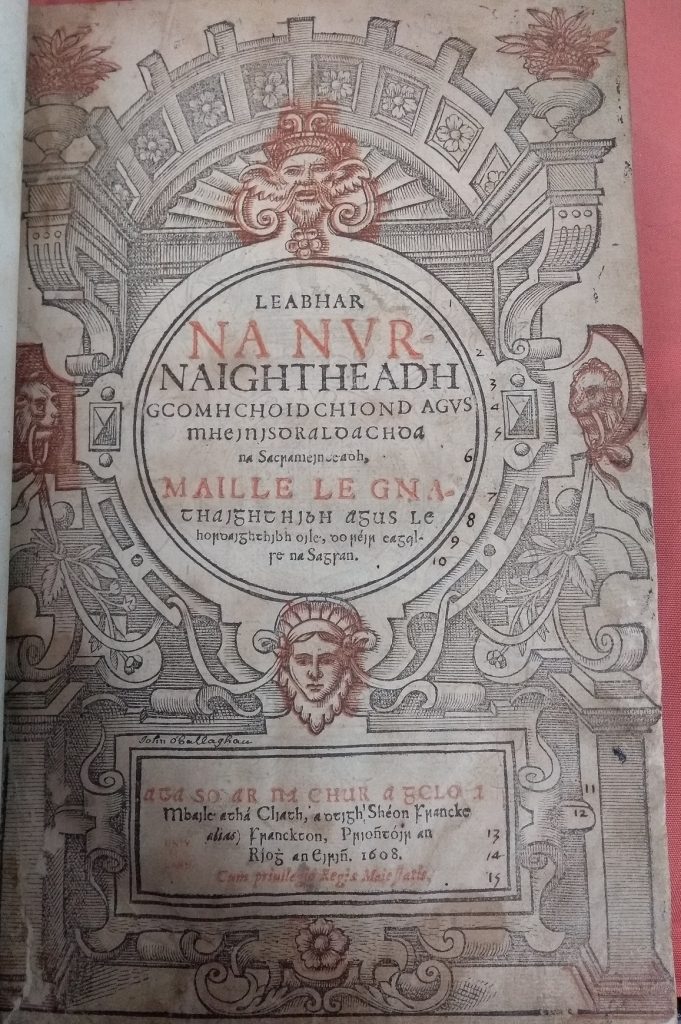

The history of the book’s development and publication would have no doubt appealed to Bradshaw. Ó Domhnuill was a member of a native Irish family who had converted to Protestantism, worked with the first printing press in Trinity College, had contact with Queen Elizabeth I, acted as a translator for Red Hugh O’Donnell, and made use of the first printed Irish type. His translated Book of Common Prayer, therefore, strengthened the claim of Anglo-Irish Protestants to a culturally rich Gaelic heritage.
Some of the more quirky items in the collection give us a clue to the range of Bradshaw’s interests. Although music publishing does not form a major part of the library, Bradshaw did collect an 1840 edition of Edward Bunting’s The Ancient Music of Ireland (see binding above right). Bunting’s collections of old harp music were some of the most important publications of Irish music of the nineteenth century. This book contains over 150 tunes recorded by Bunting from the Gaelic harp tradition, in a lavishly illustrated edition.
In a similar vein a well-thumbed copy of the 1820 Post Chaise Companion (image below), though not especially rare or valuable, gives an insight into the family dimensions of Bradshaw’s collecting. It bears the signature of Maria Bradshaw, most likely an aunt or sister of Henry, and was clearly read and used. Descriptive guides to the Irish countryside were popular in the nineteenth century, and would often have been passed down through families.
Bradshaw’s books were given to the University Library after his death in 1886. In 1916 the catalogue of the collection by Charles Sayle was published, and it remains an essential source for Irish bibliography. The Library has been adding to the Bradshaw collection ever since, and it is today by some length Cambridge’s most important Irish collection. But the man himself – thorough, inquisitive and quite private – deserves renewed attention for his contribution to collecting and preserving a significant slice of Irish printed heritage.

